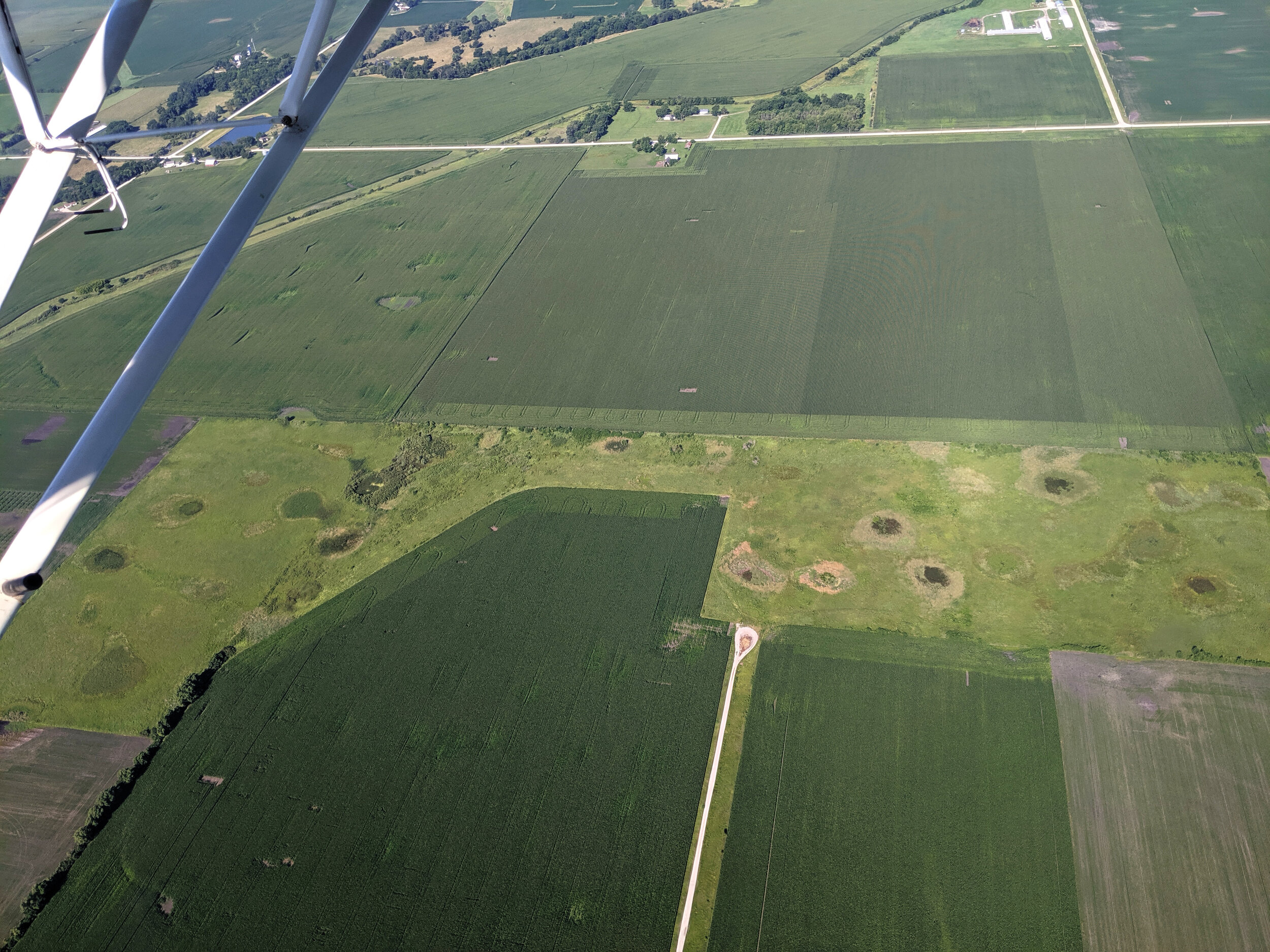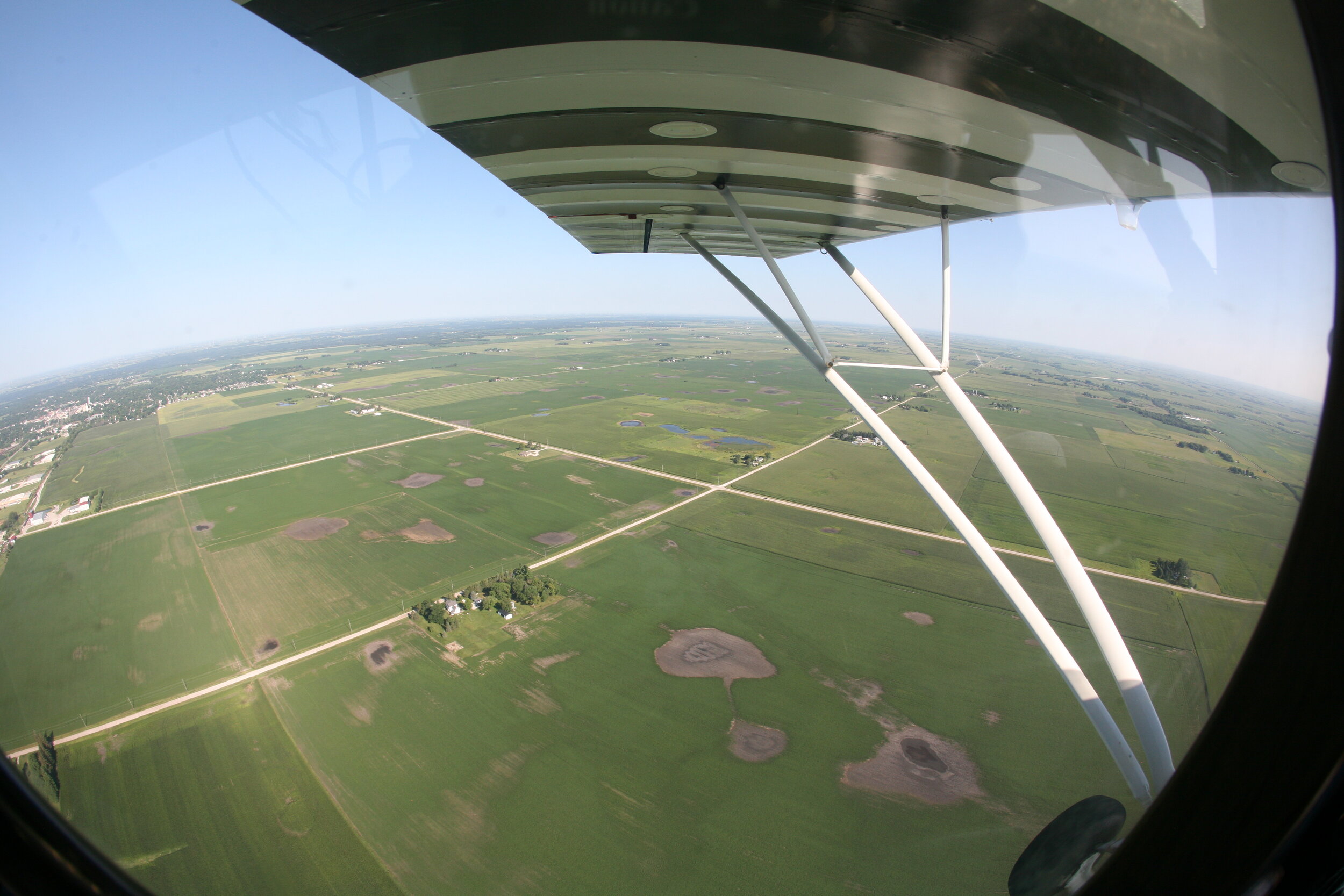Sometimes, a name feels right. “She does look like a Margaret.” Sometimes they feel wrong. “I always thought he looked like a Derek. I can never remember his name.” Names are tricky. They are hard to find.
To me, “Prairie Pothole,” the name for a shallow wetland characteristic of north central Iowa, has never felt right. “Kettlehole” gets a little closer but feels simplistic. “Wetland” is correct in a scientific, summing up kind of way, but doesn’t sum up what they really are. How they feel.
Sketchbook entry for our visit to Doolittle Prairie, a rare wet prairie remnant. The center to bottom right is a birds-eye map view, surrounded by small sketches of the views there.
I pondered this as my two year old embarked on a blustery but sunny Wednesday in early March to “get out of the house.” Doolittle is near my home and we visit often. I was feeling as restless as the wind.
We tromped through the tall dried grasses and appreciated shelter offered from an eastern red cedar, recently cut down by Story County Conservation to prevent the aggressive tree from taking over the grassland. We forged through a stand of dogwoods, a miniature forest. There was much squealing and stomping about in it. On the other side, we reached a large depression filled with water, a pothole. It was surrounded by cattails and recently mowed woody shrubs which also threatened to take over the grassland.
We dipped our Wellingtons in the cold water, pondered the sticks and reeds submerged, and threw a few more in for good measure. The wind sculpted diamond patterns on the liquid surface. It threatened to push us in on the especially strong gusts. A red-winged blackbird scolded us for invading his territory. Clouds, a little tattered, wheeled by overhead, their rough outlines mimicking the irregular depression in the earth filled with water as blue as the sky.
Pothole on the Doolittle Prairie
Last summer I had the opportunity to fly with a pilot friend who took me over our place, and also over this prairie patch. The flight confirmed the many “little drinks” (as French explorers called them) that usually go unnoticed these days, having been drained and farmed for a hundred or more years. From the air, the ghosts of their borders were easily seen. They are everywhere. It reminded me that the name “pothole” probably wasn’t negative enough for the early white settlers, who found themselves regularly chest deep in “sloughs” when they attempted any direct route across the open land.
These travel struggles are hard to imagine for us today, who can drive in three hours what took at least two weeks of hard trudging before the gridded road system, carrying all supplies needed and camping every night. It explains why so many potholes are gone. They were not only seen as “unhealthful,” but caused physical discomfort, stole boots, ruined supplies, and most of all, they were impossible to farm. The wet prairie land didn’t yield easily to European farming methods.
Yet, as Abbie Gardner wrote in her account of the Spirit Lake Massacre in 1856, this ecosystem provided a wild beauty. Her family traveled across the pothole region by wagon, fording little streams, mucking through potholes, and making a path through the tall grass.
“The far stretching prairie, clothed in its mantle of green luxuriant grass, and studded here and there with the golden stars of the resin-weed [compass plant or possibly a wild sunflower], and a thousand flowering plants of a humbler growth but no less brilliant hues, presented to the eye a scene of enchanting beauty, beside which the things of man’s devising fade like stars before the morning sun. Nor were prairies the only attraction. Here and there a babbling brook and sparkling river came together, eager to join hands and be away to the sea; and along their banks were shady groves of maple, oak, and elm, festooned with wild grape, woodbine, bitter-sweet, and ivy, in more fantastic forms and prodigality. Herds of elk and deer, in all the grace of their native freedom, fed on the nutritious grasses and sought shelter in groves. Every variety of wild fowl — in flocks no man could number — filled the air and nested on the ground. In fact, every spot teemed with life and beauty. All this filled our hearts with that peaceful joy which nature gives.”
Perhaps we are striking out again into unknown territory. With the arrival of Covid 19 across the world, our carefully constructed networks of man-made places of relaxation and fellowship are off limits. We have come to a junction where the pull and wildness of nature seems a welcome respite.
A Kettlehole at Mc Farland Park on March 24, filled with the singing of the spring peepers, drinking in a clear sky.
My family walked around another nearby park last night in a desperate escape from our predictable, comfortable shelter-in-place home. We encountered more families there on a chilly Tuesday evening than ever before (all maintaining a careful 6 foot buffer). We felt a strange unity with them - we were all there fighting the same unseen demons. As we left, we walked the prairie trail back to the parking lot. The pothole was alive with spring peepers and calm with the breeze having died down for the night. It was bigger than usual, recently filled by a day of rain. The glassy surface suddenly reminded me of an eye gazing upward at the clear sky. It drank it in.
I mourned for the loss of this wild and eloquent landscape. Of what I can’t name.






